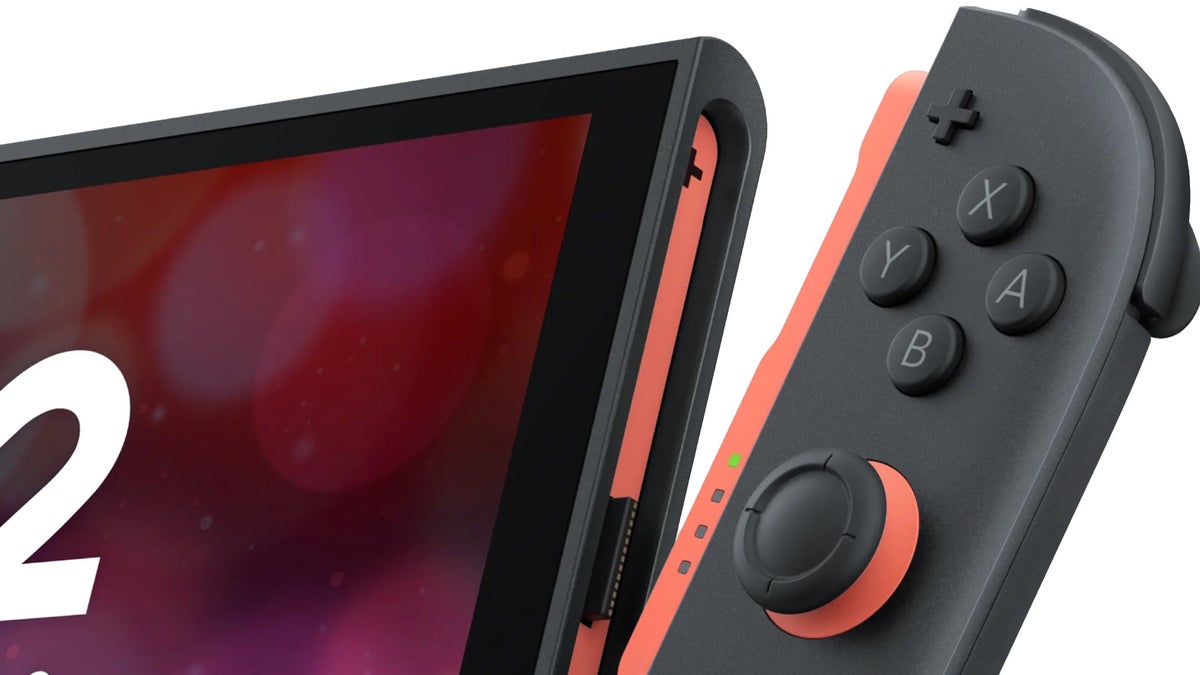
Amid speculation Nintendo might be considering a Switch 2 price hike following last week’s announcement of significant US trade tariffs, one analysis firm has told Eurogamer it expects the company to stick with its previously announced $450 launch price in the US – as it predicts Switch 2 will become the fastest-selling console ever.
Last week saw Nintendo make the unprecedented decision to delay Switch 2 preorders in the US just hours after announcing them, saying it was doing so “in order to assess the potential impact of tariffs and evolving market conditions”. More recently, Nintendo of America boss Doug Bowser has admitted that while the Trump administration’s earlier trade tariffs weren’t a factor in determining Switch 2’s price point, the latest wave of tariffs – which have heavily impacted countries where much of Nintendo’s manufacturing is focused – create a “challenge”, and are “something [the company is] going to have to address.”
Some have speculated Nintendo might respond by raising Switch 2’s price in the US, despite the fact its existing $450 USD price tag has already seen a vocal pushback from fans. However, analyst David Cole, founder of games industry marketing and research firm DFC Intelligence, has told Eurogamer his firm sees a change in price as unlikely at launch. “We are expecting Nintendo to stick with the $450 price point,” Cole told Eurogamer, “and we believe that price point was reached with the threat of tariffs already looming.”
However, in its initial Switch 2 guidance, DFC also suggests US trade tariffs – which include a 24 percent levy on Japanese goods – could lead to a 20 percent price increase for the console over the next two years. As such, it’s lowered its initial 2025 worldwide forecast for Switch 2 from 17m to 15m units sold. “If prices increase substantially due to tariffs,” it notes, “a significant portion of prospective buyers are likely to hold back on a purchase until prices come down.”
Cole tells Eurogamer DFC’s revised forecast factors in both a potential price hike and “the possibility that there may be a supply issue if Nintendo chooses to limit production initially” due to tariffs. “Nintendo is very conservative,” he adds, “and they don’t like to take big risks on having surplus inventory. So they may take a bit of a wait and see approach given some of the current unknowns.”
Despite DFC’s revised sales forecast, the firm notes shifting 15m units in 2025 would still make Switch 2 the “fastest-selling gaming console to date, outpacing its predecessor”. And looking further ahead, it believes “the upper limit for hardware sales… is enormous”, adding, “As the Switch 2 matures it has the ability to capture an even larger share than the original Switch.”
“With its expanded appeal and focus on capturing new consumer segments,” the firm writes, “it will likely redefine what constitutes the core Nintendo audience. Historically seen as a niche or standalone ecosystem, Nintendo is now poised to engage more directly with the broader competitive landscape dominated by Sony and Microsoft… This shift could mark a transformational moment for the video game industry, as the Switch 2 positions itself as a serious contender across multiple demographics and game genres.”
Switch 2 is still scheduled to launch worldwide on 5th June, despite Nintendo’s decision to indefinitely delay pre-orders in the US – a delay that has now impacted Canada as the company moves to “align with the timing of pre-orders to be determined in the US”.
And it’s not just Nintendo. Earlier this month, US trade group the Entertainment Software Association said the Trump administration’s tariffs will “have a real and detrimental impact” on the video games industry as a whole.
